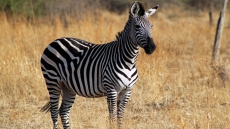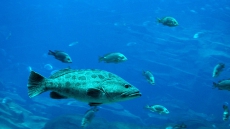CALGARY — A Canadian-owned Twin Otter turboprop plane left the South Pole on Wednesday with two sick workers in a rescue mission from a remote U.S. science outpost, federal officials said.
In an international effort, the plane started the approximately 2,400-kilometre flight to Rothera, a British station on the Antarctic peninsula, said Peter West, spokesman for the National Science Foundation, which runs the polar station for the United States.
The Twin Otter is owned by Calgary-based Kenn Borek Air.
It's a nine to 10-hour flight, which the crew made from Rothera on Tuesday to get to the South Pole.
"It's cold. It's very dark. It's Antarctica, so they're crossing a huge and empty territory. Antarctica itself is the size of the U.S. and Mexico combined, so there are many factors that they're dealing with," West said.
Once the sick patients and the crew — a pilot, co-pilot, flight engineer and medical worker — rest, they are to leave Antarctica for medical attention that could not be provided on the remote continent.
West said two support crew being airlifted out are employed by logistics contractor Lockheed Martin. The foundation, citing medical privacy, won't identify the sick workers or their conditions.
Normally planes don't use the polar outpost from February to October because of the dangers of flying in the pitch dark and cold. It was -60 C on Wednesday at the South Pole, according to the station's webcam and weather gauges.
The first day of winter in the Southern Hemisphere was Monday and the sun will not rise at the South Pole until the first day of spring in September.
The extreme cold affects a lot of things on planes, including fuel, which needs to be warmed before takeoff, batteries and hydraulics, West said. The Twin Otter can fly in temperatures as low as -75 C, he said.
"The air and Antarctica are unforgiving environments and punishes any slackness very hard," said Tim Stockings, operations director at the British Antarctic Survey in London. "If you are complacent, it will bite you."
"Things can change very quickly down there" with ice from clouds, high winds and snow, he said.
West said there is no tarmac at the South Pole station to land on, but there is a landing strip on the ice.
"All the ice shifts about 30 feet a year away from the pole because of the way the ice drifts, but the ski way is maintained in a constant location.
West noted it would be a perilous flight back to the British station.
The foundation decided last week to mount the rescue operation because one staffer needed medical care that can't be provided there. The station has a doctor, a physician's assistant and is connected to doctors in the U.S. for consults, West said. There are 48 people — 39 men and nine women — at the station.
There have been three emergency evacuations from the Amundsen-Scott station since 1999. The 1999 flight, which was done in Antarctic spring with slightly better conditions, rescued the station's doctor, Jerri Nielsen, who had breast cancer and had been treating herself. Rescues were done in 2001 and 2003, both for gall-bladder problems.
Scientists have had a station at the South Pole since 1956. It does astronomy, physics and environmental science with telescopes, seismographs and instruments that monitor the atmosphere. The foundation runs two other science stations in Antarctica.






